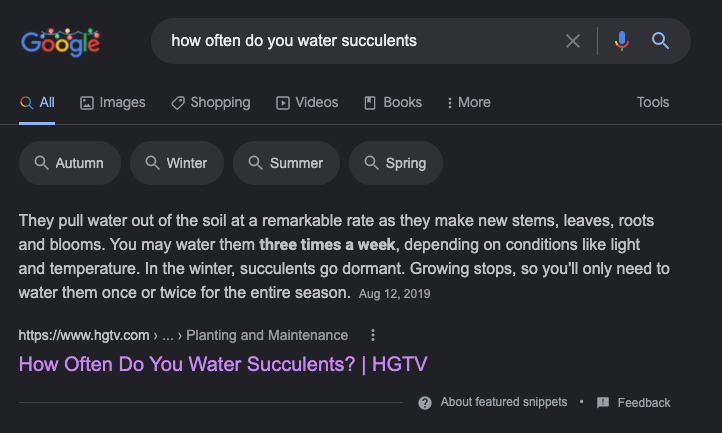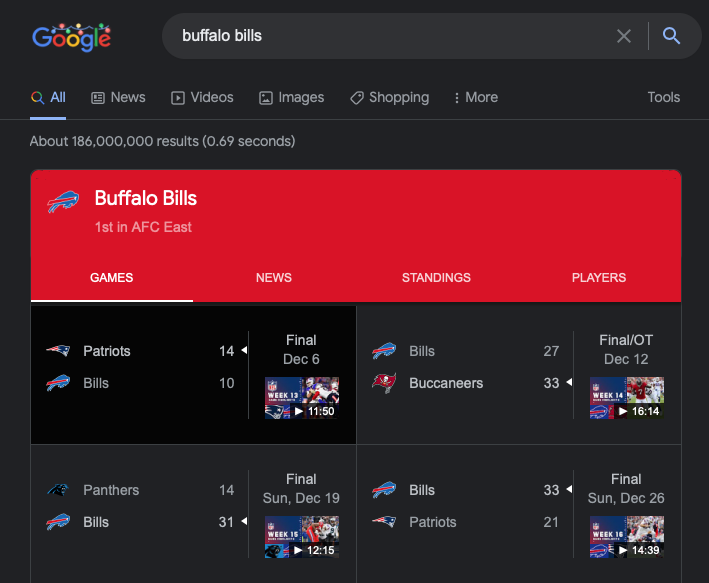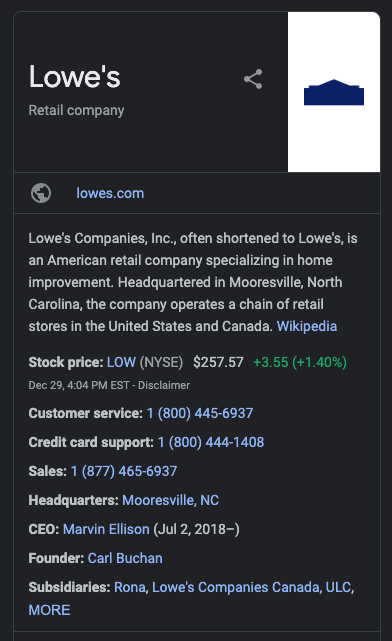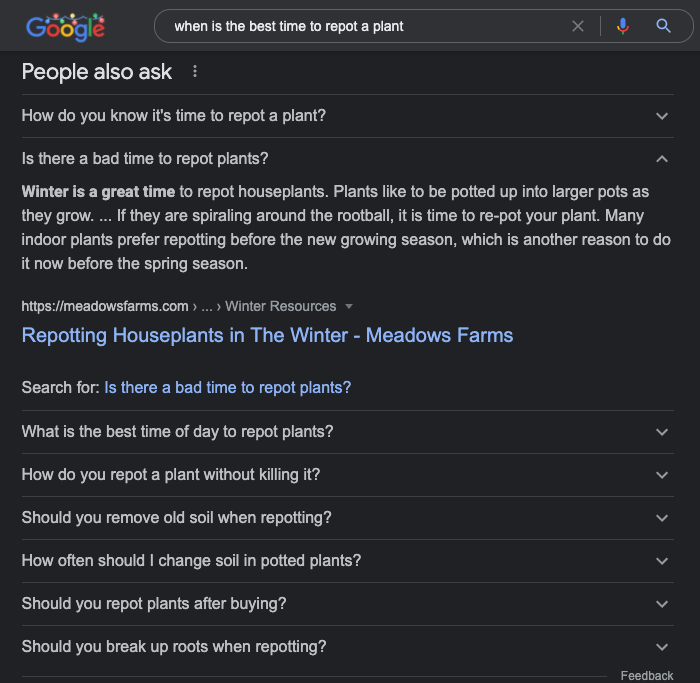Schema Markup
What is schema markup?
Schema markup is a semantic language (also called microdata) that is specifically read by search engines like Google and Bing. Adding this specific code to your website enables the search engine bots to parse specific elements of your website content to display within the Search Engine Results Pages. This helps provide website users with with quick and reliable data as soon as they type their question and click “search”. Ideally, implementing schema can help a website user find the answer they are looking for or the product, service, medical entity, organization, person, recipe, or event much more quickly and easily through “rich snippets” or “knowledge graphs”
As an avid plant enthusiast I am constantly googling for information relating to watering, feeding, light for specific plants I own. Below you will see a sample of the schema language placed in the backend of the site hgtv.com. This code is telling google that anyone searching for the term “how often do you water succulents” will find the answer to their question highlighted in a rich snippet within google so I don’t have to spend time searching through non related website content to find my answer.

What is a “rich snippet”?
If schema markup is the coding language, the rich snippet is what the end user sees displayed. In the previous image above you saw the schema code and below you will find how that code translates to what the user sees in real time. This snippet of information is most prominently featured within the results page and is more likely to encourage me to click through the link to read the entire article.

How are featured snippets chosen?
This process is random at best and to be honest there is no guarantee that your website content will be featured. According to Google:
“Featured snippets come from web search listings. Google’s automated systems determine whether a page would make a good featured snippet to highlight for a specific search request. Your feedback helps us improve our search algorithms and the quality of your search results.”
What is a knowledge graph?
Google maintains an extensive database of information collected from the billions of searches performed by users and from Google’s automated search algorithms that bring users the specific answers they are seeking. Using this information allows Google to display relevant information about your brand or service in what are known as “knowledge panels” that are located either in the header or sidebar of the search engine result page.
In the same way we can use schema markup to display an answer to a users question, we can also use schema markup to display business information such as hours of operation, business photos, accessibility information, parking availability, menu options and more.
In addition, Google also licenses data in order to display sports scores from the NFL and other major sports leagues, weather data, alerts, and warnings, COVID statistics from the CDC and more.

Does schema help SEO?
Google states that having Schema markup on your site is not a definitive ranking factor and it is up to their discretion whether or not it is used, meaning, just because you utilize implement the code on your site doesn’t mean Google will feature you in the SERPs. That being said, for most sites having schema markup is better than not.
For most businesses a good start is local markup as I have seen that utilized more often than not in a knowledge panel when conducting SEO research in that business’ locality.

Also simply marking up various data on your site vastly increases the viability of your content being seen. When conducting research on a highly competitive nationally recognized informational site, I have witnessed them ranking in the top of the Google results pages simply because content was used in an answer box for a commonly asked question while their organic ranking was much lower.

How do I use schema markup?
- Determine which schema markup will best suit your business. The best place to start is to visit the official schema.org website to find the most commonly used schemas and their explanations. Additionally, you can use several markup aggregators that do most of the work for you. I recommend Google’s Structured Data Markup Helper or my personal favorite, Merkle’s Schema Markup Generator that uses JSON-LD markups which tend to be a little bit better for SEO.
- Once you have the code generated, you just need to add the code to the specific page you intend to mark up. If your website has a Wisywig editor, just edit in HTML and the code should be implemented once you save/publish your page. If you use WordPress, Gutenburg will allow you to add an HTML block to the page content where you can add the code.
- Validate your code by using the schema markup validator. This will note if you are missing any specific elements that Google looks for when crawling your website.